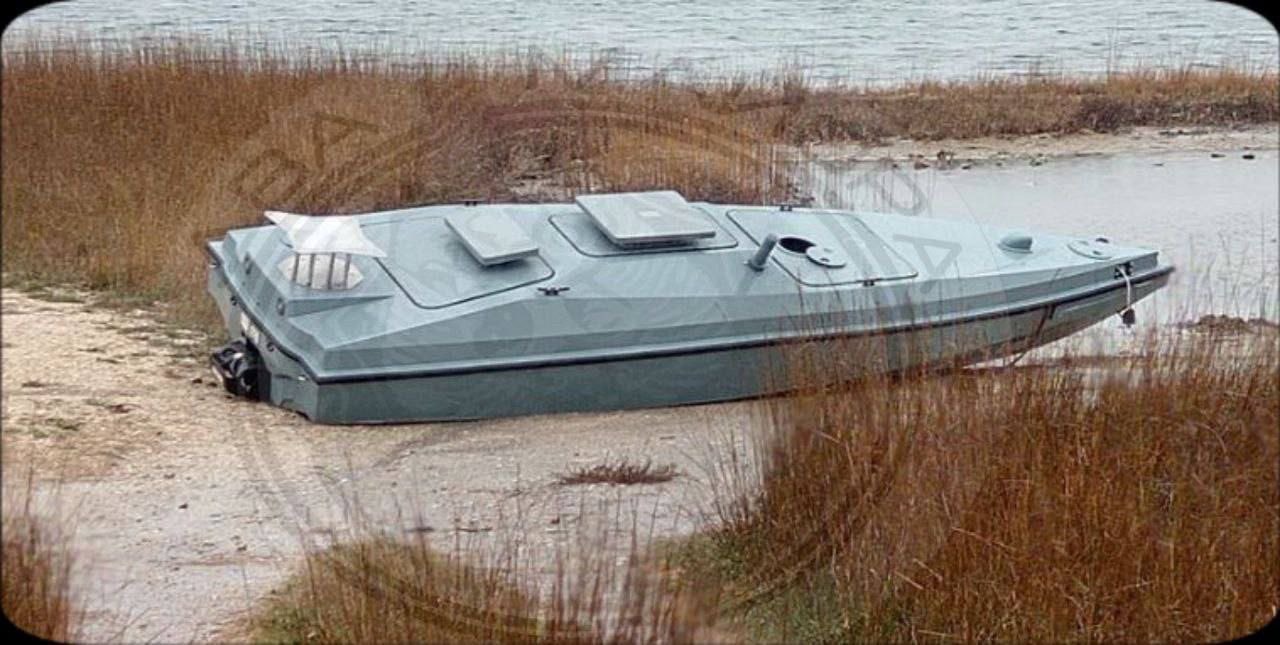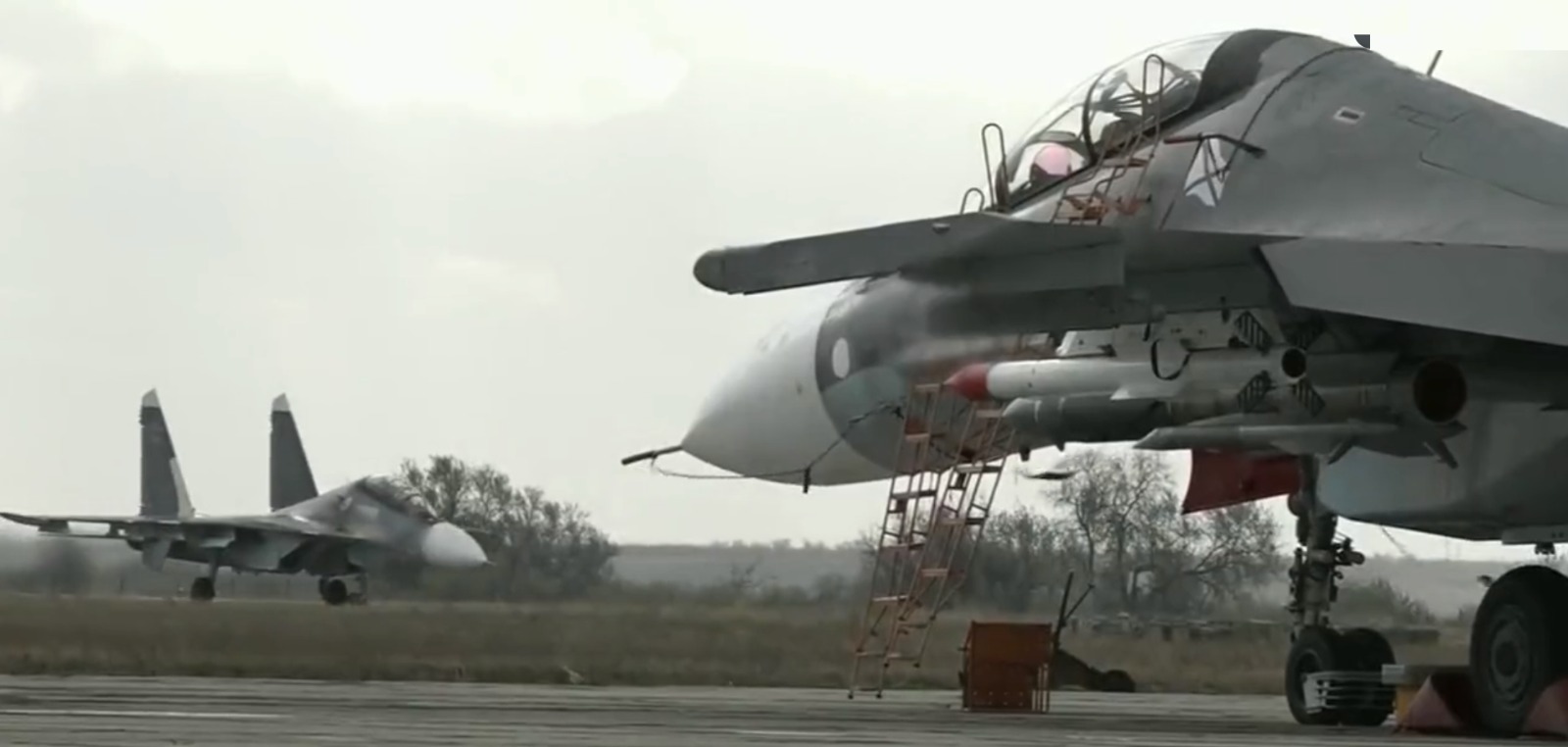In a clear demonstration of the Russian military’s ongoing efforts to thwart Ukrainian kamikaze drone boat assaults, the advanced Su-30SM fighter jet now appears to be actively involved in neutralizing these unconventional attacks.
The Russian Ministry of Defense has released a video featuring Su-30SM fighter aircraft from the Black Sea Fleet patrolling Crimea’s coastal waters and eliminating unmanned Ukrainian vessels.
The Russian media outlet Ria Novosti, citing the Black Sea Fleet’s information support department, reported that the Su-30SM and Su-24M crews are tasked with identifying and taking down unmanned boats and high-speed landing vessels.
The report said fighters and frontline bombers effectively target high-speed surface threats through aircraft guns or aerial bombs.
Moreover, the multifunctional Su-30SM fighters are proving effective against enemy drones attempting to target infrastructure facilities on the peninsula. The report added that Black Sea pilots have successfully intercepted and downed several dozen Ukrainian UAVs over the Black Sea.
Edge of the seat RuMoD released footage of a Su-30SM of the Black Sea Fleet attacking and destroying a Ukrainian USV off the coast of Crimea. pic.twitter.com/wiEloRCyug
— Vijainder K Thakur (@vkthakur) November 25, 2023
Ukraine has demonstrated proficiency in constructing cost-effective Unmanned Surface Vehicles (USVs) packed with explosives. These vessels have been utilized in attacks against Russian warships, oil tankers, and naval bases, significantly complicating Russia’s maritime strategic position.
Scott Savitz, a senior engineer at the RAND Corporation, shared two critical factors amplifying the threat posed by USVs compared to aerial weapons: the specific points of impact and the substantial explosive payloads they carry.
Savitz further highlighted the versatility of explosive-laden USVs. These unmanned vessels can be launched from piers or larger ships, providing tactical flexibility.
Notably, they can remain inconspicuous in discreet locations for extended periods before stealthily approaching their targets. Their ability to strike in coordinated numbers can overwhelm defenders and disrupt their capacity to mount an effective response.
The combination of these factors underscores the evolving challenges posed by unmanned maritime threats and the need for enhanced countermeasures in naval defense strategies.
Russia’s Efforts To Counter USVs
The inclusion of the Su-30 in operations reflects the continuous endeavors of the Russian military to eliminate Unmanned Surface Vehicles (USVs) before they can inflict significant damage on Russian warships.
Given the elusive nature of unmanned watercraft and semi-submersible drones on the water’s surface, locating these devices presents a formidable challenge, as radar detection methods struggle with their near-invisibility.
Moscow has turned to naval aviation to bolster its position against Ukraine in the Black Sea, aiming to counter threats posed by unmanned surface vessels (USVs) and maritime drones.
Russian Naval Aviation is placing significant emphasis on maritime air patrol operations, likely with a primary mission of early identification of uncrewed surface vessels (USVs).
EurAsian Times has previously reported that the approval of Project 14400, featuring the construction of a unique vessel known as the “floating desk,” has already been granted by the Russian MoD.

This vessel is specifically designed to facilitate the training of naval aviation helicopter pilots and is scheduled for launch next year, aligning with the commencement of crew training procedures.
The training of Russian helicopter pilots on this specialized vessel aims to equip them with the skills to neutralize a diverse range of maritime threats.
Reports in October revealed that the Russian Navy has even started the formation of helicopter detachments specializing in countering surface drones.
Helicopters such as the Ka-27, Ka-29, and Mi-8 are integral to these detachments, with initial crews assuming active combat roles in the Black Sea region. These pilots actively develop tactical procedures for detecting and neutralizing maritime drones.
In addition to these efforts, Russia has adopted 1950s-era Beriev Be-12 amphibious aircraft for maritime patrol, as reported by the UK Ministry of Defense.

Originally designed for anti-submarine warfare, the Be-12 features advanced sensor suites, including a search radar and a magnetic anomaly detector for hunting submerged submarines.
The Be-12′ Mail’ amphibious aircraft, operating from bases in occupied Crimea, plays a crucial role in these operations.
Intelligence from the UK also suggests that Sukhoi Su-24 and Su-27/30-family jets operated by Russia’s navy continue to perform maritime strikes, showcasing the multifaceted approach employed by Moscow to bolster its maritime capabilities in the Black Sea region.
- Contact the author at ashishmichel(at)gmail.com
- Follow EurAsian Times on Google News




